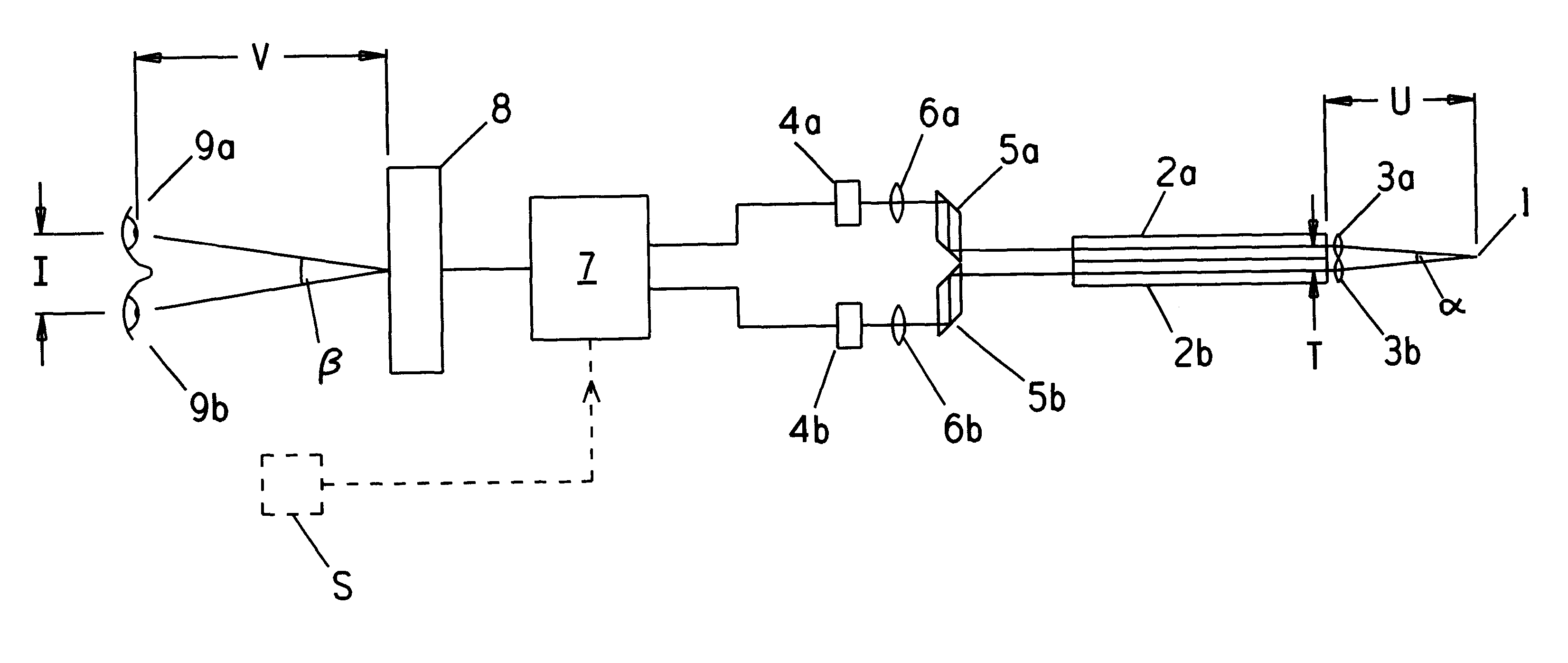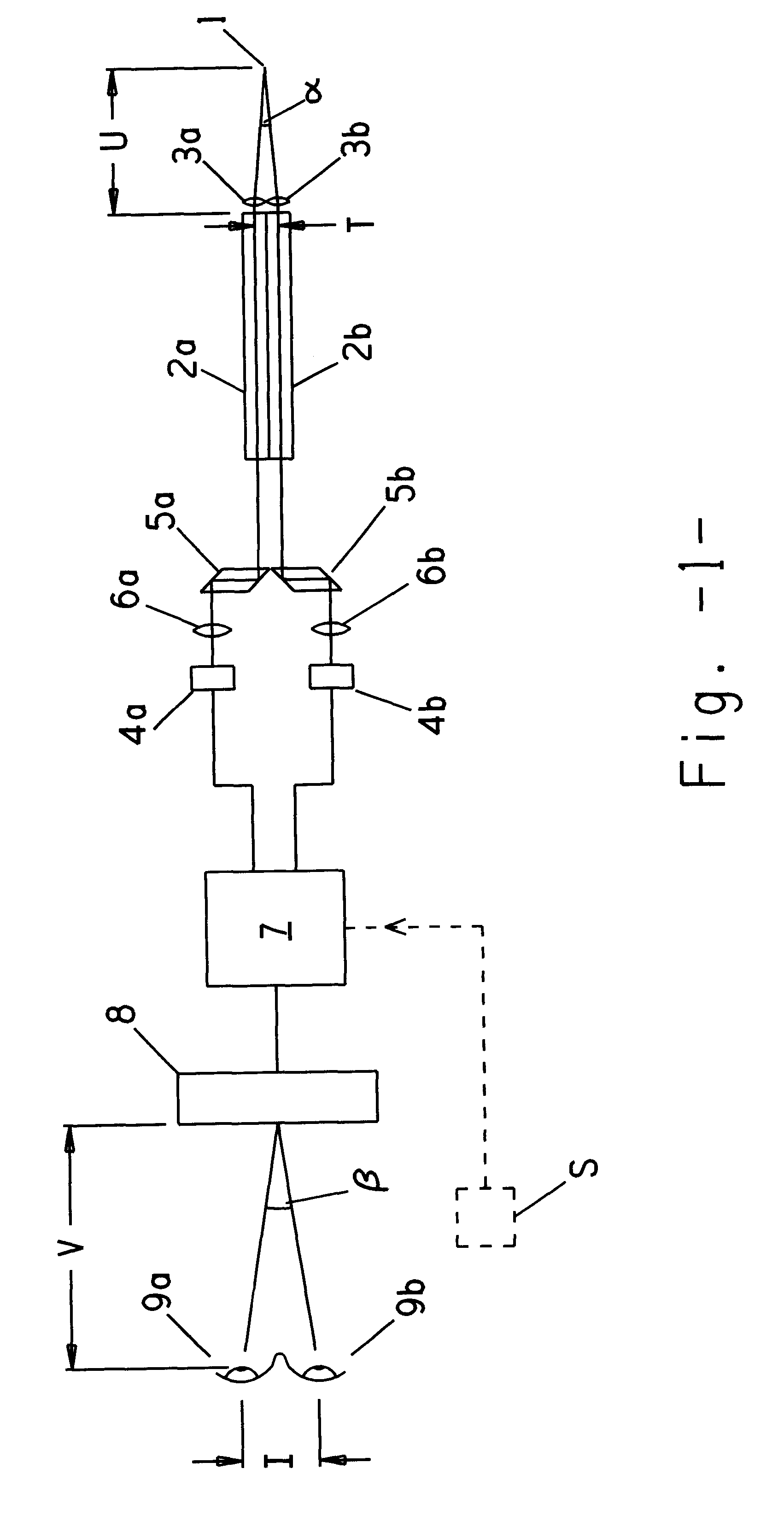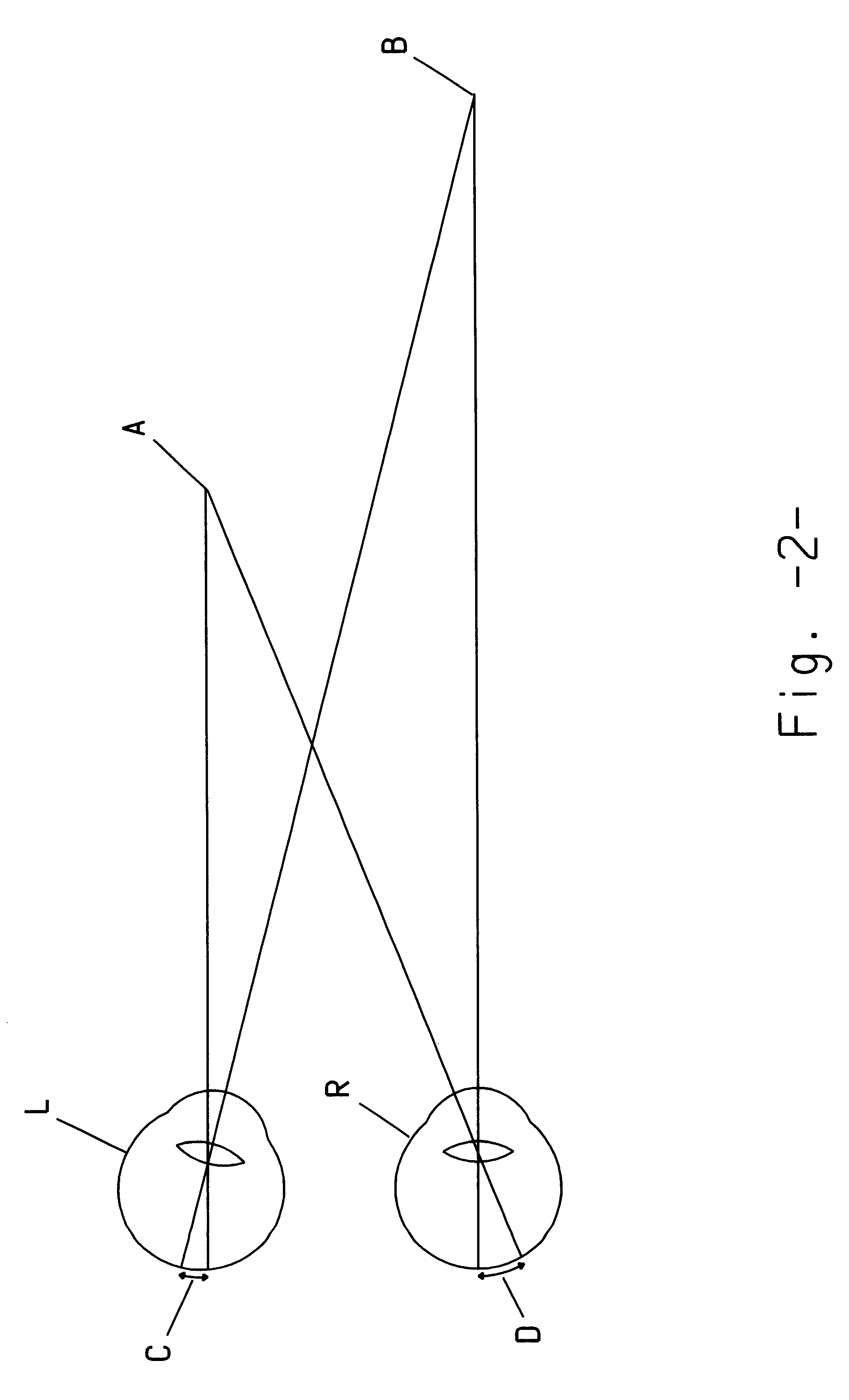Method and apparatus for improved eye-hand co-ordination during videoscopic surgery
a technology of eye-hand coordination and videoscopic surgery, applied in the field of minimally invasive endoscopic surgery, can solve the problems of severe nausea, observer discomfort, and poor substitute for natural binocular vision, and achieve the effects of reducing discomfort, reducing pain, and reducing discomfor
- Summary
- Abstract
- Description
- Claims
- Application Information
AI Technical Summary
Benefits of technology
Problems solved by technology
Method used
Image
Examples
Embodiment Construction
Referring to FIG. 1 there is shown a stereo-endoscope for viewing a point 1 within an object field. The endoscope comprises a pair of optical relay channels 2a, 2b which receive light from the object field, via respective objective lenses 3a, 3b. Each relay channel may comprise coherent fibre optic bundles or a series of relay lenses, in order to relay an image of the object field from the distal end of the channel to its viewing end. Channels 2a, 2b provide respectively for left and right eye views and transmit light to respective CCD cameras 4a, 4b, via prisms 5a, 5b and lenses 6a, 6b. An electronics system 7 takes the camera signals and provides output to a display unit 8, which comprises a back-lit LCD screen and a lenticular array arrangement capable of providing simultaneous co-located and different views of the object field directed to the left and right eyes 9a, 9b of an observer.
At the distal end of the endoscope an angle a is subtended at point 1 by the spacing of the obje...
PUM
 Login to View More
Login to View More Abstract
Description
Claims
Application Information
 Login to View More
Login to View More - R&D
- Intellectual Property
- Life Sciences
- Materials
- Tech Scout
- Unparalleled Data Quality
- Higher Quality Content
- 60% Fewer Hallucinations
Browse by: Latest US Patents, China's latest patents, Technical Efficacy Thesaurus, Application Domain, Technology Topic, Popular Technical Reports.
© 2025 PatSnap. All rights reserved.Legal|Privacy policy|Modern Slavery Act Transparency Statement|Sitemap|About US| Contact US: help@patsnap.com



